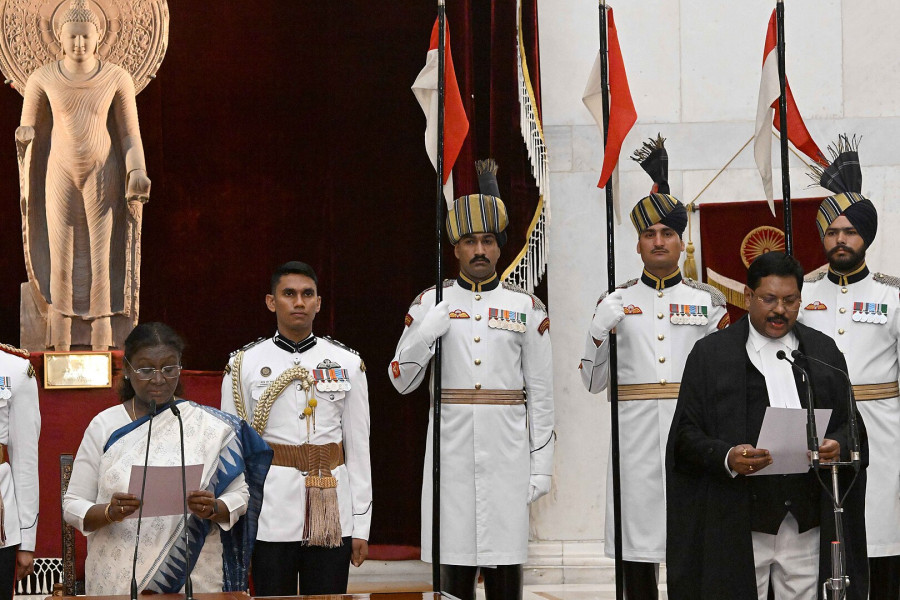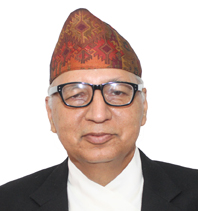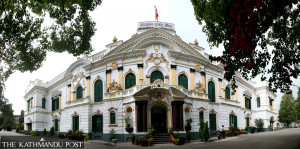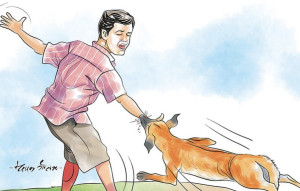Columns
Enhancing judicial bonding
Indian Chief Justice Gavai has the opportunity to reinforce the judicial ties between India and Nepal.
Ananda Mohan Bhattarai
On May 14, Justice Bhushan Ramkrishna Gavai succeeded Chief Justice Sanjeev Khanna to become the 52nd Chief Justice of India. His elevation is remarkable as it brings many “firsts” to the fore. He is the first Buddhist to be sworn in as Chief Justice, the first from the semi-slum area of Amravati to reach the Supreme Court, and the first to have attained all his degrees from an almost nondescript institution amid a galaxy of noted Indian universities. Gavai is the second Dalit Chief Justice after KG Balakrishanan (2007-10). Inspired by Dr BR Ambedkar’s idea of equality and social justice, Gavai once said, “It is solely due to Dr BR Ambedkar’s efforts that someone like me, who studied in a semi-slum area at a municipal school, could attain this position.”
Gavai joined the legal profession in 1985. He was elevated to the Bench in the Maharashtra High Court in November 2003 and was granted a permanent tenure in November 2005. After working for nearly 14 years in the High Court, Gavai became a Supreme Court judge on May 24, 2019, bypassing three seniors. The Collegium, headed by Chief Justice Ranjan Gogoi, endorsed Gavai and stated: “The Collegium while recommending his name has duly considered Mr Justice Gavai’s position (Sl.No.4) in the seniority of Judges hailing from Bombay High Court. His recommendation, in no way, is to be misconstrued to mean that three senior-most Judges from Bombay High Court (two of whom are serving as Chief Justices) are less suitable than Mr Justice Gavai. On his appointment, the Supreme Court Bench will have a Judge belonging to the Scheduled Caste category after about a decade”. The appointment is justified because in over 70 years of independence, the Supreme Court of India has had only a handful of justices from a scheduled caste background.
Justice Gavai has authored over 300 judgments in over six years. He has also shared benches on constitutionally significant cases such as the annulment of Art 370 of the Constitution (Re Art 370 case), demonetisation (Vivek Narayan Sharma v Union of India 2023) and the Electoral Bond Scheme Case (Association of Democratic Reform v Union of India 2024), More importantly, in the affirmative action case (Punjab v Davinder Singh 2024), the constitutional bench headed by the then CJ Dhananjaya Yeshwant Chandrachud, improving upon the 1991 Indra Sawhney decision, allowed further categorisation of Scheduled Caste and Scheduled Tribes to exclude the “creamy layer” reaping the benefits of affirmative action to achieve true equality under the constitution.
In his concurring but separate opinion Gavai said, “When the 9- judge Bench in Indra Sawhney held that applicability of such a test (Creamy layer test) in so far as Other Backward Classes (OBC) are concerned would advance equality as enshrined in the Constitution, then why such a test should not also be made applicable to the Scheduled Caste (SC) and Scheduled Tribes (ST)”. His statement further questioned the benefits reaped by the creamy layer, barring the downtrodden from opportunities. Gavai questioned, “Can a child of IAS/IPS or Civil Service officer be equated with a child of disadvantaged member belonging to Scheduled Castes, studying in a Gram Panchayat/Zilla Parishad school in a village?” In this context, it is important to note that the Supreme Court of Nepal, in a case, had ruled that the creamy layer should not be allowed to benefit from affirmative action, as this would stymie the true equality envisaged by the Constitution of Nepal.
While Justice Gavai is known for his liberal pro-liberty views, some of his decisions have given him the limelight. They include granting bail to Manish Sishodia, a politician, journalist and social activist who had been languishing for over 15 months without a meaningful trial; bail to human rights activist Teesta Seetalvad in 2023, who was indicted for allegedly fabricating evidence in the 2002 Gujarat riots; and the release of AG Perarivalan in 2022, a convict in the Rajiv Gandhi assassination case. Similarly, in 2023, the Supreme Court stayed the conviction of Rahul Gandhi in a criminal defamation case over the Modi surname remarks during the Bharat Jodo Yatra. Absent this stay, Rahul Gandhi would have been suspended from the Parliament.
A few of his decisions in favour of environmental protection, such as banning mining around the Sariska tiger reserve in Rajasthan and, more recently, asking the Telangana government to halt tree-felling activities in Hyderabad, are positively reviewed. Gavai’s ruling on the right to shelter against reckless bulldozing of houses in Delhi was also commended.
With regards to further bonding between the Nepali and Indian judiciary, Chief Justice Prakash Raut and Chief Justice BR Gavai have the responsibility to bring the two judiciaries closer by taking initiatives to implement the Memorandum of Understanding (MoU) recently signed. Gavai, accompanied by a few other justices of the Supreme Court of India, attended the signing ceremony during CJ Raut’s visit to India at the invitation of former CJ Sanjeev Khanna. (Though the MoU was conceived during the tenure of CJN Biswambhar Prasad Shrestha and CJI Chandrachud, it could not be signed during Chandrachud’s visit to Nepal last May due to some procedural hurdles.)
The MoU provides for exchange of visits, cooperation in judicial education and other aspects of institution building. Given the strong focus of our two judiciaries on the rule of law, constitutional governance, human rights, environmental and climate justice, the bonding will provide further impetus to our commitment to promote constitutionalism and serve our respective people. A true believer in peace, harmony and the teachings of Lord Buddha, Chief Justice Gavai, who now holds the mantle of the Indian judiciary, has both the obligation and the opportunity to enhance the justice system and reinforce the judicial bonding between the Nepali and Indian judiciaries. His credentials provide optimism for bringing the two judiciaries closer.




 19.12°C Kathmandu
19.12°C Kathmandu















